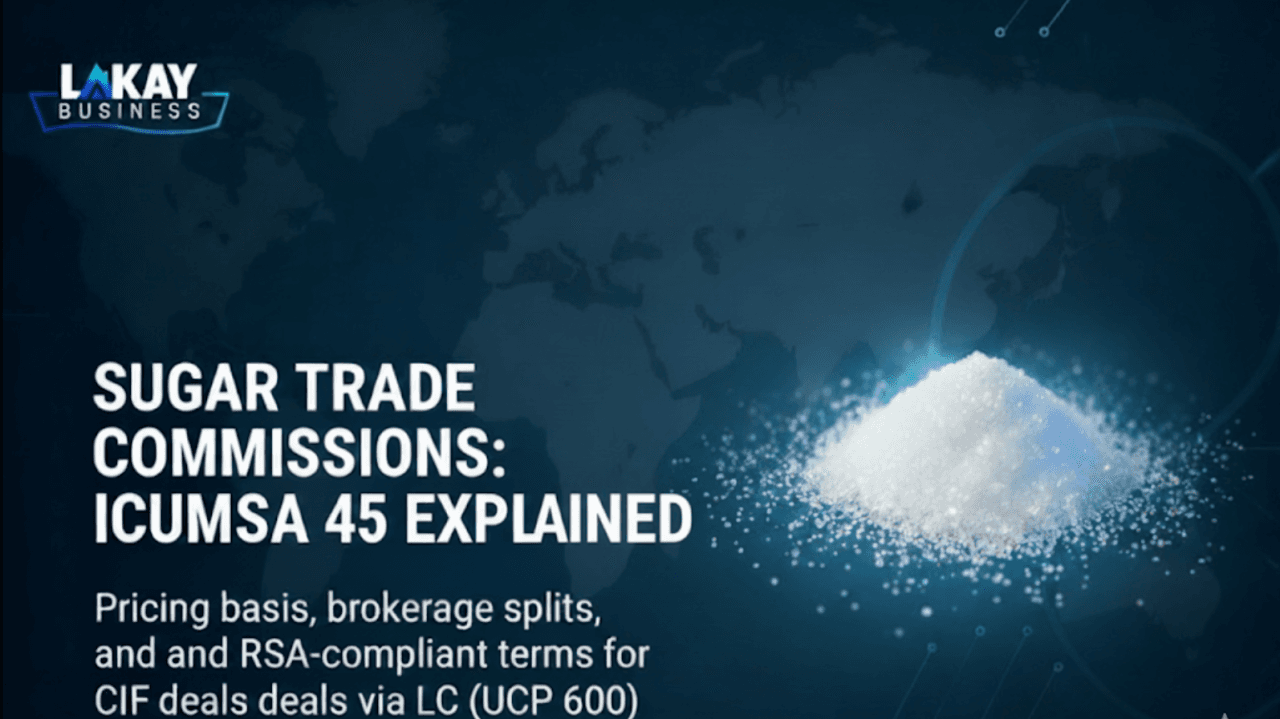
Understanding Sugar Trade Commissions for ICUMSA 45 Deals
Refined sugar deals live or die on three things: a sharp CIF, bankable paperwork, and clean compliance. Price is a stack—ICE No.5 basis + freight + insurance—plus a fixed margin “K.” That K pays for ops, docs, risk… and every broker in the chain. Commissions aren’t a magic extra; they live inside the price. Push them up and either your CIF climbs or your netback gets crushed. Contracts should ride on RSA (refined) or SAL (raw) rails, spell out Incoterms 2020 CIF insurance (ICC(C) at 110%), and anchor payment to UCP 600: banks pay on documents, not on how sweet the sugar looks. In practice, keep total commissions lean—low single-digit $/MT is common—and cap the pool in an annex tied to LC proceeds. Know destination realities: China’s TRQ can swing landed cost far more than any $2/MT haggle. Operationally, Brazil excels at raw bulk; bagged refined is slower, riskier, and pricier—so expect a fatter K if you insist on awkward load plans. Ditch “ICC-approved” NCNDA fairy tales, screen intermediaries, and write a bank-executable commission schedule. Do that, and you win tenders on price and get everyone paid without drama.






